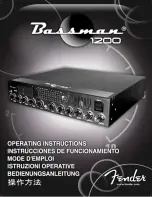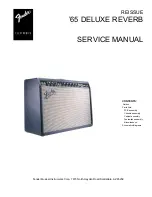
iBasso
Headphone Amplifier
P5
Falcon
Owner’s manual
1
Main Features:
- Three Channel or Four Channel compatible
architecture design.
- A total of 8 gold-plated DIP sockets for OPAMPs
and Buffers allowing for opamp or buffer rolling.
- 3 Gain settings for impedance matching.
- Bass boost to enhance bass performance.
- Powered by dual 9V batteries, or the P5 power
supply.
- High output power, 660mW+660mW into 32
Ω
when
powered by batteries, or 1000mW into
32Ohm when powered by the P5 power supply.
- CNC engraved aluminum housing, which can be
opened with just one screw.
Caution:
To protect your hearing, please follow the operation
guide and do not listen at extremely high volume
levels. Extended high volume listening can lead to
permanent hearing loss.
Contents:
iBasso P5, rubber feet, connection cable, and
warranty card. Also comes with an OPAMP rolling
kit that includes the following OPAMPs and Buffers.
OPAMP/BUF
Qtt.
L/R
BUF
VG/OG
Singe
Dual
OPA627
2
•
-
•
•
-
NE5534 biased
2
•
-
•
•
-
BUF634U
4
-
•
•
•
-
BUF634P WB
4
-
•
•
•
-
Transistor BUF
4
-
•
•
•
-
Dummy
adapter
4
-
•
•
•
-
OPA627*2, BUF634U*4, and BUF634P*4 are
mounted on the P5.
Inserting and Charging the Battery:
Before inserting the 9V batteries, check the position
of positive and negative terminals. Make sure the
batteries are being placed in correct direction.
The P5 power supply can charge
9V NiMH batteries
only. When using 9V Li-ion or other 9V non NiMH
batteries in the P5, the power supply must be
disconnected to avoid harm to the batteries or the
power supply. Failing to follow these directions
could cause fire and or the batteries to explode.
There is not charge lamp on the P5 or the P5 power
supply. The batteries are being charge once the P5
power supply is connected. The batteries will be
fully charged after
8~16 hours
. Since the charge
current is small and limited, you can leave the P5
power supply plugged with no over-charging
concerns.
OPAMP and Buffer Rolling
Before opening the housing to change OPAMPs or
buffers, make sure the P5 is turned off. OPAMPs
and Buffers can be damaged by static electricity. It is
better to change OPAMPs and buffers in a static-free
environment. Also, before inserting the OPAMPs in
the sockets, check to make sure if it is a single or dual
OPAMP, then place it to the right position.
Direction of Inserting the OPAMP and Buffer:
In the following drawing, the first pin of the OPAMPs,




















